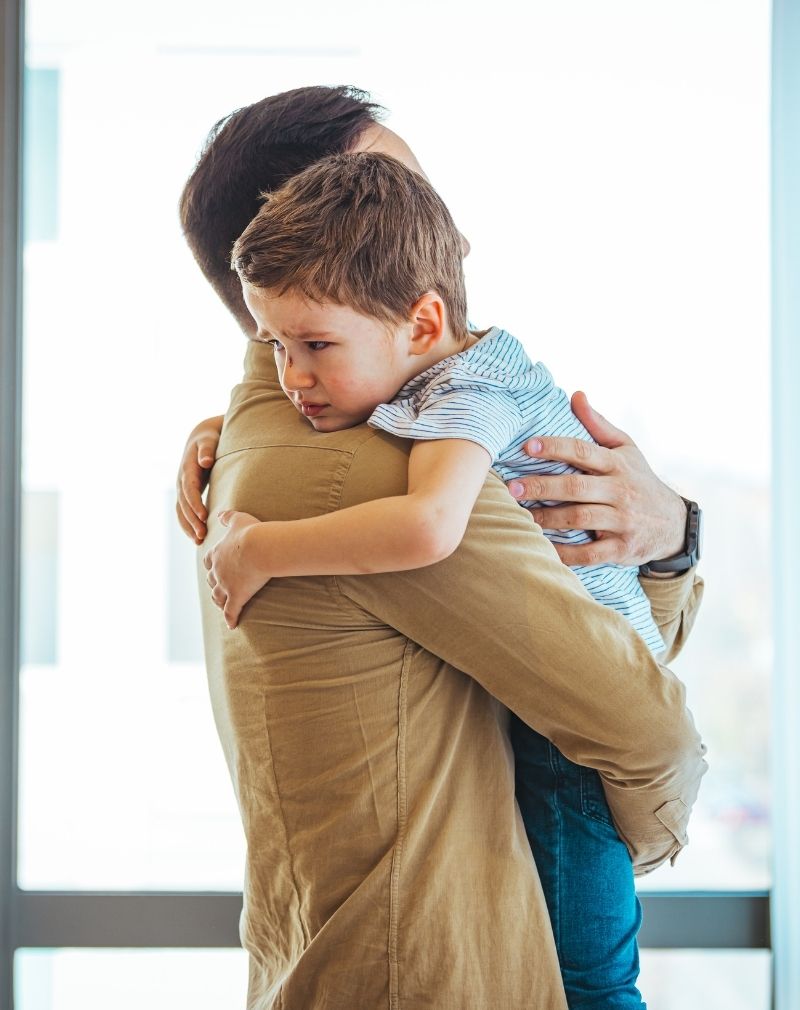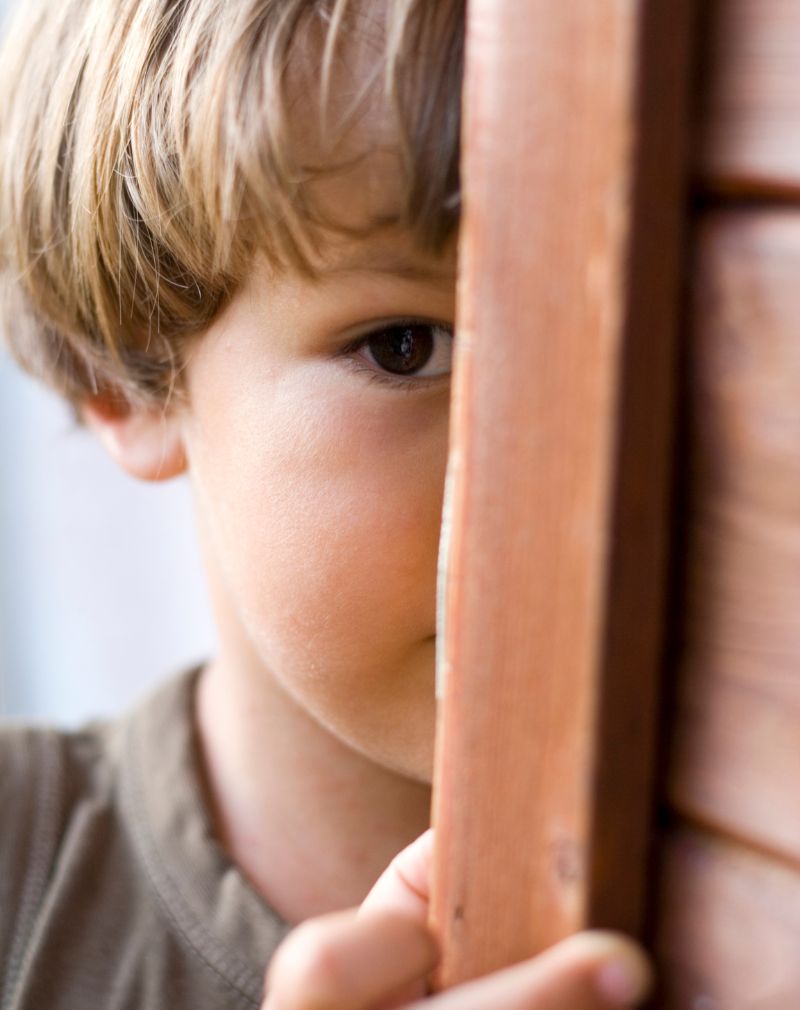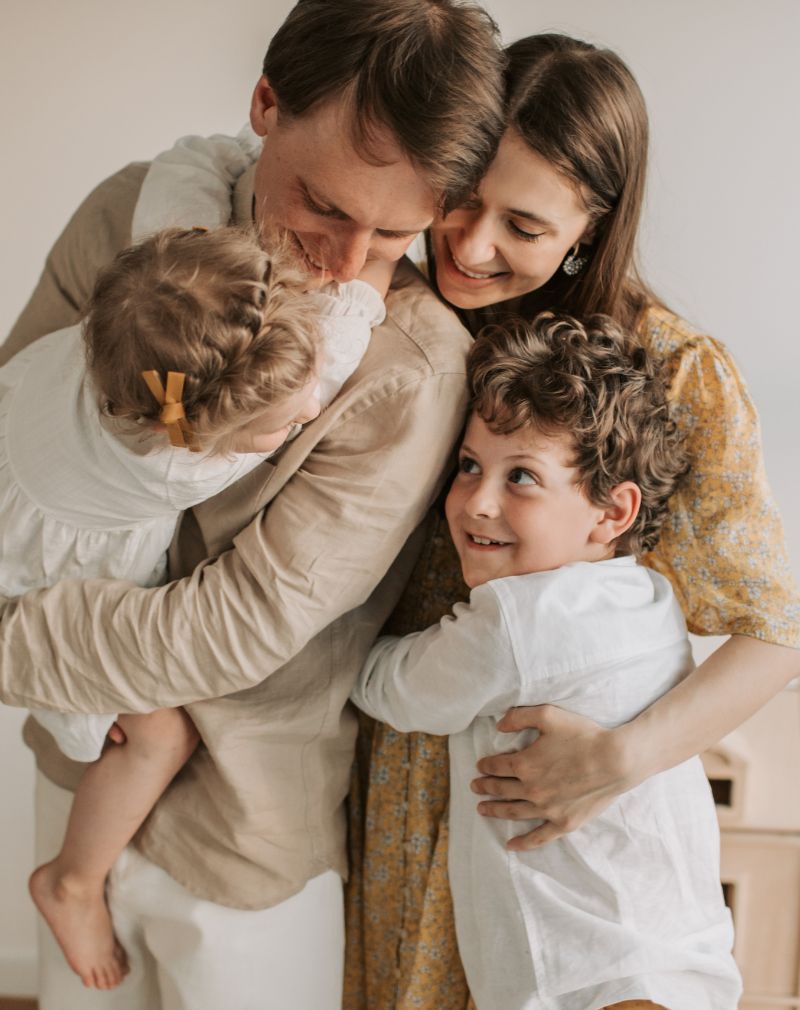Anxiety is often viewed as a condition affecting adults, but child anxiety is very real and can be just as debilitating. It is increasingly being recognized that children, even those under the age of 10, can experience significant anxiety. Anxiety in children can manifest in various forms, and understanding its signs, knowing when to seek professional help, and fostering a healthy mental and emotional environment at home are crucial for their well-being. Early intervention is key to preventing long-term complications and ensuring a better outcome for the child’s overall development.
What Is Child Anxiety?
Child anxiety refers to a condition where children experience overwhelming feelings of worry, fear, or nervousness that are out of proportion to the actual circumstances. These feelings can affect their daily lives, relationships, school performance, and even physical health. While it’s normal for all children to experience fear or anxiety from time to time—such as feeling anxious about a new school or a doctor’s visit—persistent or excessive anxiety can indicate a deeper issue that requires attention. According to Consultant child psychiatrist Dr. Mouhammad S. Tahir, “Children may not have the words to express their fears, but their anxiety speaks volumes through their behaviors and emotions. A child’s silent struggles deserve to be heard with understanding, care, and early intervention.” Dr. Tahir is ex-assistant professor at Columbia University and has done tremendous work in child mental health .
Why Do Children Under the Age of 10 Get Anxious?
Children under 10 are in a developmental stage where they are constantly learning how to navigate the world around them. Their brains are still maturing, and they may not have the coping mechanisms to handle stress effectively. Here are some common reasons why young children experience anxiety:
1. Separation Anxiety: This is particularly common in younger children. They may fear being away from their parents or primary caregivers, which can lead to intense feelings of distress when separated.
2. Fear of the Unknown: Children may become anxious about things they don’t fully understand, such as death, darkness, or unfamiliar environments. Their imaginations are very active, which can intensify fears.
3. Academic Pressure: School-related stress, including performance anxiety or the fear of failing, can also be a significant source of anxiety for children.
4. Social Situations: Making friends or fitting in can be a daunting task for children. Social anxiety can cause them to worry about being judged or not being accepted by their peers.
5. Family Issues: Family conflict, parental divorce, or even witnessing arguments at home can be overwhelming for children and lead to anxiety.
6. Traumatic Events: Any form of trauma, such as accidents, illness, or the death of a loved one, can cause anxiety in children as they try to make sense of these situations.
7. Genetics: Some children are more predisposed to anxiety due to genetic factors. If there is a family history of anxiety disorders, a child may be more susceptible.
Signs of Child Anxiety
Identifying anxiety in children can be challenging, especially because younger children may not have the words to express their feelings. However, there are certain behaviors that may indicate a child is struggling with anxiety:
1. Physical Complaints: Children with anxiety often report stomachaches, headaches, or other physical symptoms without any medical cause. This is because anxiety can manifest as physical discomfort.
2. Restlessness or Irritability: An anxious child may appear fidgety, restless, or easily irritated. They may also have difficulty sitting still or concentrating.
3. Avoidance Behaviors: A common sign of anxiety is avoidance. For example, a child may try to avoid school, social activities, or any situation that triggers their anxiety.
4. Excessive Worry: If a child frequently expresses worries that seem out of proportion to the situation, this could be a sign of anxiety. For instance, they might worry excessively about their safety, school performance, or relationships with friends.
5. Sleep Disturbances: Difficulty falling asleep, staying asleep, or experiencing nightmares can be an indicator of anxiety. Many anxious children report trouble sleeping due to racing thoughts.
6. Crying or Meltdowns: Anxiety can lead to emotional outbursts, where a child might cry, become clingy, or have meltdowns in response to stressors.
7. Overthinking and Reassurance Seeking: Some children may constantly ask for reassurance about situations they are worried about, even if they have already received answers multiple times.
Red Flags for Parents
As a parent, it’s important to recognize red flags that suggest your child’s anxiety may be more than just a phase. Some key red flags include:
1. Persistent Anxiety: If your child’s anxiety lasts for weeks or months and shows no signs of improving, this is a red flag.
2. Avoidance of Normal Activities: If your child starts avoiding activities they used to enjoy or refuse to go to school, it may indicate a deeper problem.
3. Excessive Clinginess: If your child becomes unusually clingy or refuses to be separated from you, especially as they grow older, this could signal separation anxiety disorder.
4. Decline in School Performance: Anxiety can affect a child’s ability to concentrate and perform well in school. If you notice a sudden drop in grades or complaints from teachers about your child’s behavior, it could be a sign of anxiety.
5. Self-Isolation: If your child withdraws from social activities and prefers to stay alone, this is another red flag that shouldn’t be ignored.
6. Physical Symptoms with No Medical Explanation: If your child frequently complains of physical symptoms like stomachaches or headaches, and medical tests show no clear cause, anxiety could be the underlying issue.
The Role of Parents in Raising Mentally and Emotionally Healthy Children
Parents play a crucial role in shaping their child’s mental and emotional health. Here are some ways parents can help raise emotionally resilient children:
1. Model Healthy Coping Skills: Children learn from observing their parents. By modeling healthy ways to manage stress, such as deep breathing, problem-solving, and expressing emotions constructively, you can teach your child to do the same.
2. Encourage Open Communication: Create a safe and supportive environment where your child feels comfortable talking about their worries and feelings. Let them know it’s okay to feel anxious sometimes.
3. Teach Problem-Solving Skills: Help your child learn how to break problems into manageable steps and come up with solutions. This will boost their confidence and reduce feelings of helplessness.
4. Validate Their Feelings: Instead of dismissing or minimizing your child’s fears, validate their feelings. Let them know it’s okay to be scared, but also reassure them that they can handle the situation.
5. Establish Routines: Consistent routines help children feel secure. Having regular sleep, meal, and playtimes can reduce anxiety by providing a sense of predictability.
6. Encourage Physical Activity: Exercise is a great way to reduce anxiety and improve mood. Encourage your child to engage in physical activities they enjoy, whether it’s playing outside, dancing, or riding a bike.
7. Limit Screen Time: Too much screen time, especially exposure to violent or stressful content, can increase anxiety in children. Set boundaries for screen time and ensure that your child is exposed to age-appropriate content.
8. Promote Positive Social Interactions: Encourage your child to develop friendships and participate in group activities. Positive social connections are crucial for emotional well-being.
When to Seek Professional Help
If your child’s anxiety is interfering with their daily life and none of the above strategies seem to help, it may be time to seek professional help. A child psychologist or psychiatrist can offer specialized support to help your child overcome their anxiety.
How Can Child Psychologists and Psychiatrists Help
At American Wellness Center located in Dubai healthcare City our mental health professionals are highly qualified and western trained and use evidence-based intervention plans for treatments.
1. Cognitive Behavioral Therapy (CBT): This is one of the most effective treatments for childhood anxiety. A psychologist will help your child identify negative thought patterns and replace them with more positive, realistic ones.
2. Play Therapy: For younger children, play therapy can be a helpful way for them to express their feelings and work through their anxiety.
3. Family Therapy: Sometimes, family dynamics contribute to a child’s anxiety. In family therapy, everyone works together to create a healthier, more supportive environment for the child.
4. Medication: In severe cases, a child psychiatrist may prescribe medication to help manage anxiety. This is usually a last resort and is combined with therapy.
Why Early Intervention Is Crucial
Early intervention is critical for several reasons:
1. Preventing Long-Term Complications: Untreated anxiety can lead to more severe issues, such as depression, substance abuse, or academic failure. The longer anxiety goes untreated, the more entrenched it becomes in a child’s psyche.
2. Building Coping Skills Early: The sooner a child learns how to manage anxiety, the better equipped they will be to handle stress as they grow older. These coping skills will serve them well throughout their lives.
3. Improving Academic and Social Success: Children who receive treatment for anxiety are more likely to do well in school and form healthy relationships with their peers.
Complications of Untreated Anxiety in Children
If anxiety is left untreated, it can lead to several complications:
1. Poor Academic Performance: Anxiety can impair concentration, memory, and problem-solving skills, all of which are necessary for academic success.
2. Social Withdrawal: Untreated anxiety can cause children to withdraw from social interactions, which can lead to loneliness, low self-esteem, and difficulty forming friendships.
3. Depression: Anxiety and depression often go hand-in-hand. If left untreated, anxiety can lead to depressive symptoms and a higher risk of developing depression in adolescence or adulthood.
4. Behavioral Problems: Children with untreated anxiety may develop behavioral issues, such as anger, defiance, or oppositional behavior, as a way to cope with their overwhelming feelings.
5. Substance Abuse: In adolescence, children with untreated anxiety may turn to alcohol or drugs as a way to self-medicate and cope with their feelings of distress.
Child anxiety is a real and significant issue that requires attention and care. As parents, recognizing the signs of anxiety and taking early steps to address it is crucial for your child’s mental and emotional development. With a supportive home environment, professional intervention when necessary, and a proactive approach, parents can raise children who are resilient, emotionally healthy, and well-equipped to handle the challenges of life. Early intervention can make all the difference, preventing long-term complications and fostering a positive future for the child.
According to DSM5 what is the definition of Child Anxiety
According to the DSM-5 (Diagnostic and Statistical Manual of Mental Disorders, 5th Edition), **child anxiety disorders** encompass several conditions, each with specific criteria. The most common types of anxiety disorders in children include **separation anxiety disorder**, **generalized anxiety disorder**, and **social anxiety disorder**, among others. Here’s a brief overview of each:
1. Separation Anxiety Disorder (SAD): It involves excessive fear or anxiety concerning separation from those to whom the child is attached. According to the DSM-5, the child must exhibit developmentally inappropriate and excessive anxiety about being separated from a caregiver or home. Symptoms must persist for at least **4 weeks** in children and adolescents and may include recurrent distress when anticipating separation, worry about losing attachment figures, and refusal to go out due to fear of separation.
2. Generalized Anxiety Disorder (GAD): GAD in children is characterized by excessive worry and anxiety about a variety of events or activities (such as school performance or social interactions) for more days than not, lasting at least **6 months**. Children may experience difficulty controlling the worry, and it may be accompanied by physical symptoms such as restlessness, fatigue, difficulty concentrating, muscle tension, and irritability.
3. Social Anxiety Disorder (Social Phobia): This is defined as a marked and persistent fear of social or performance situations where the child is exposed to unfamiliar people or possible scrutiny by others. The child fears acting in a way that will be embarrassing or humiliating, leading to avoidance or intense distress in social settings. The anxiety must last for at least **6 months** and cause significant distress or impairment in functioning.
The DSM-5 emphasizes that for all these anxiety disorders, the symptoms must cause significant distress or impairment in social, academic, or other important areas of functioning and are not better explained by another mental disorder.



